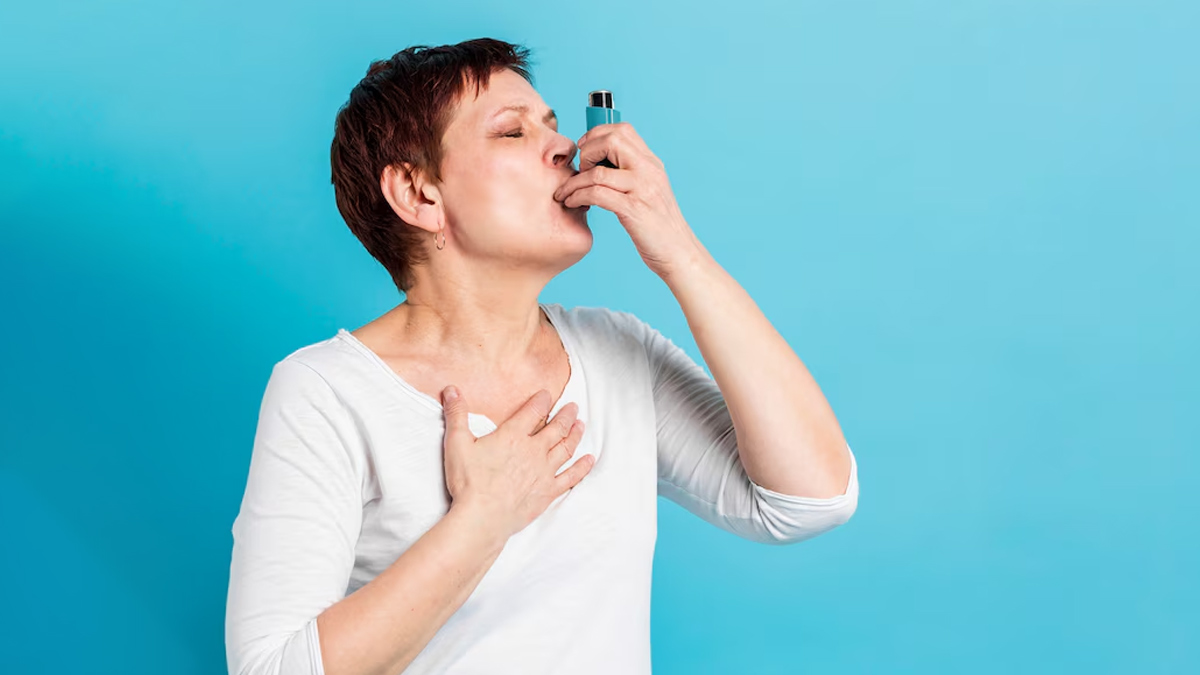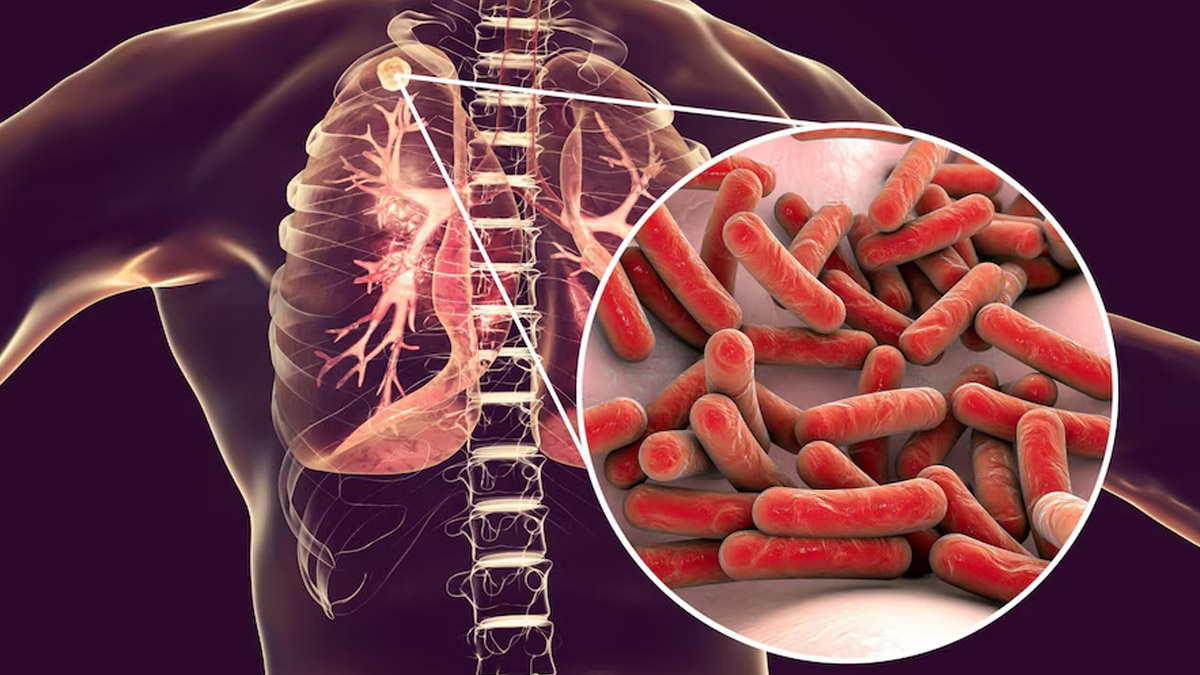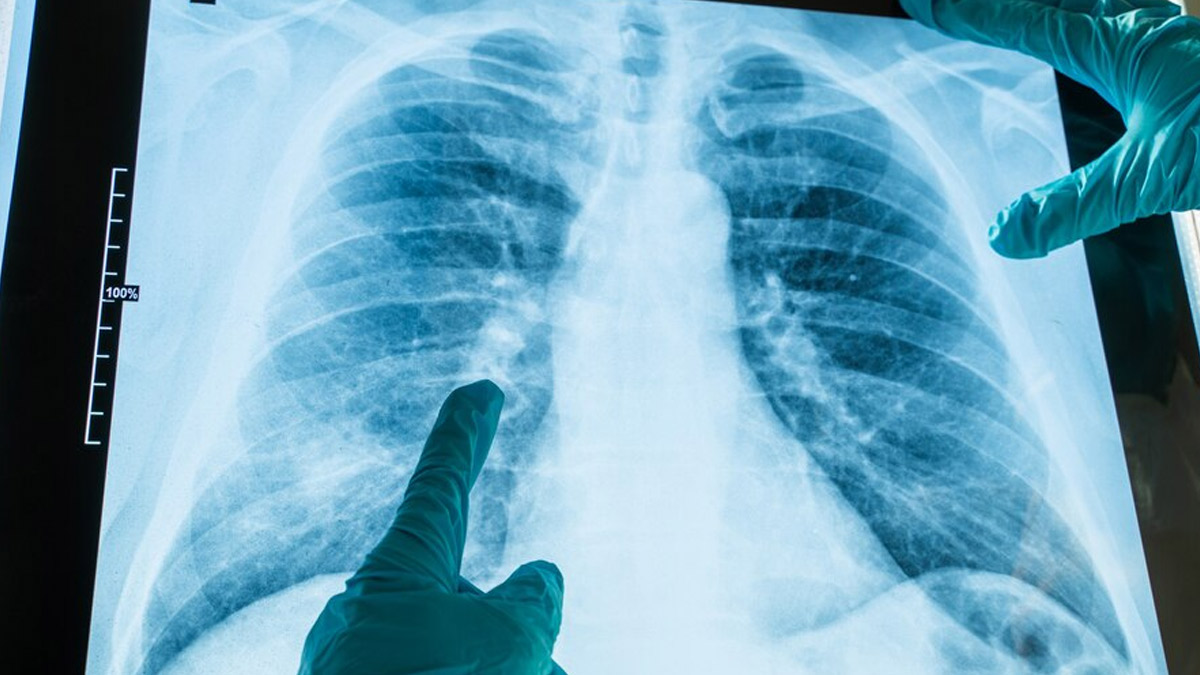
The nose, mouth, throat, voice box, windpipe, and lungs together make up our respiratory system. When these organs are not able to fulfil their purpose adequately causing a dysfunctional respiratory system, then we call it a respiratory disease. So conditions like a blocked nose, difficulty breathing, or excessive coughing are all symptoms of a respiratory disorder.
Table of Content:-
A 2023 study conducted by the Institute of Health Metrics and Evaluation assessed the global burden of Chronic Respiratory Diseases from 1990-2019. The study published in eClinicalMedicine found that as of 2019, CRDs cause four million deaths globally, becoming the third leading cause of death with a prevalence of 454.6 million cases worldwide.
In light of this, the Onlymyhealth team spoke to Dr Kinjal Modi, Consultant, Pulmonology, PD, Hinduja Hospital & MCR, Khar who elucidated the five most common types of respiratory diseases.

Asthma
Dr Modi labelled asthma as the most prevalent respiratory disease in the world and India. “Asthma is a chronic lung condition that causes inflammation and narrowing of the airways, leading to breathing difficulties.” According to estimates provided by the World Health Organisation (WHO), 262 million people had Asthma as of 2019.
Asthma Symptoms
“Initially, the progression of asthma symptoms are slow and eventually progress into a full-blown respiratory issue in a couple of months or year,” said Dr Modi. He listed the most common symptoms of Asthma:
- Breathlessness
- Coughing
- Excessive sputum while coughing
- Allergic conditions like rhinitis
- Wheezing
- Tightness in chest
Asthma Risk Factors
Dr Modi shared that the following factors can put you at risk of developing asthma:
- Genetics: Family history plays a role in asthma development.
- Environmental Factors: Allergens like pollen, dust mites, pet dander, and air pollution can trigger asthma attacks.
- Respiratory Infections: Viral respiratory infections can exacerbate asthma symptoms.
- Tobacco Smoke: Exposure to tobacco smoke, either actively or passively, increases asthma risk.
Asthma Diagnosis and Treatment
Doctors diagnose asthma through a combination of medical history, physical exams, lung function tests (spirometry), and sometimes allergy tests to identify triggers. If asthma is detected, then one option is that “Asthma can get better on its own if patients avoid the known triggers of asthma,” said Dr Modi. However, if that is not the case, then the following pathways are adopted to treat asthma:
- Avoiding triggers
- Using inhalers (bronchodilators and corticosteroids) to control inflammation and open airways
- Allergy medications or immunotherapy
Also Read: As Heavy Fog Engulfs North India, Expert Shares How It Can Trigger Asthma

Chronic Obstructive Pulmonary Disorder
Secondly, Dr Modi mentioned Chronic Obstructive Pulmonary Disorder (COPD). According to the National Heart, Lung, and Blood Institute, COPD is a progressive lung disease that includes chronic bronchitis and emphysema, characterised by airflow obstruction and breathing difficulties. More than 16 million people in the world have COPD.
COPD Symptoms
Dr Modi listed the symptoms of COPD, stating that these signs often worsen over time:
- Chronic cough
- Shortness of breath
- Wheezing
- Chest tightness
Risk Factors of COPD
It is important to diagnose the symptoms of COPD on time because, “Unlike Asthma which only affects the lungs, COPD affects everything in the body, starting from the brain to muscles,” said Dr Modi. Some of the factors that can put you at risk of COPD are:
- Smoking: The primary cause of COPD is both active and passive smoking.
- Environmental Exposure: Occupational exposure to dust, chemicals, and indoor/outdoor air pollution.
- Genetics: Alpha-1 Antitrypsin deficiency is a genetic risk factor for COPD.
COPD Diagnosis and Treatment
“Diagnosis involves spirometry to assess lung function, imaging tests like chest X-rays or CT scans, and evaluation of symptoms and medical history,” said Dr Modi. He listed the treatment modalities of COPD:
- Smoking cessation
- Medications such as bronchodilators and steroids
- Pulmonary rehabilitation programs
- Oxygen therapy
- In severe cases, surgical interventions like lung volume reduction surgery or lung transplantation
Also Read: Asthma And COPD Cases Up By 50% In Delhi: Experts Cite Increasing Air Pollution As The Cause

Tuberculosis
Dr Modi said, “Tuberculosis (TB) is a bacterial infection caused by Mycobacterium tuberculosis, primarily affecting the lungs but can also affect other organs. WHO shared that TB affects almost 10 million people every year and 1.5 million people die from it despite it being preventable and curable.
TB Symptoms
The American Lung Association stated that TB is caused by Mycobacterium tuberculosis. More than 10 million people in the world have active TB even though 1.8 billion people have been infected by latent TB. Dr Modi listed the symptoms of TB as:
- Prolonged cough (more than three weeks)
- Chest pain
- Coughing up blood
- Weight loss
- Fever
- Night sweats
TB Risk Factors
The risk factors of TB are:
- Close Contact: Being in close contact with someone with active TB.
- Weakened Immune System: HIV/AIDS, diabetes, certain medications (immunosuppressants).
- Living Conditions: Crowded or poorly ventilated settings increase transmission risk.
TB Diagnosis and Treatment
“Diagnosing TB involves skin tests (Tuberculin Skin Test), blood tests (Interferon-Gamma Release Assays), chest X-rays, and sputum tests to detect TB bacteria,” said Dr Modi.
He added, “TB treatment requires a combination of antibiotics taken for several months to eradicate the bacteria. It's crucial to complete the full course of treatment to prevent drug-resistant TB.”
Also Read: Tuberculosis in Children: Expert Lists Its Risk Factors And Treatment Challenges

Interstitial Lung Disease
“Interstitial Lung Disease (ILD) encompasses a group of lung disorders that cause inflammation and scarring of lung tissue, leading to progressive fibrosis and impaired lung function,” said Dr Modi.
Interstitial Lung Disease Symptoms
According to a study published in the CHEST Journal, the United States witnessed more than 6.54 lakh cases of ILD in 2019. Dr Modi listed the symptoms of ILD:
- Progressive shortness of breath
- Dry cough
- Fatigue
- In advanced stages, clubbing of fingers or toes
Risk Factors of Interstitial Lung Disease
The risk factors of ILD are:
- Environmental Exposure: Silica dust, certain medications (chemotherapy drugs), and occupational exposures.
- Autoimmune Diseases: Connective tissue disorders like rheumatoid arthritis or scleroderma.
- Genetics: Certain genetic factors predispose individuals to ILD.
Interstitial Lung Disease Diagnosis And Treatment
“Diagnosis includes imaging tests like high-resolution CT scans, lung function tests (spirometry), and sometimes lung biopsy for definitive diagnosis,” said Dr Modi. He added, “ILD treatment aims to reduce inflammation and slow fibrosis progression. It may involve corticosteroids, immunosuppressants, oxygen therapy, pulmonary rehabilitation, and in severe cases, lung transplantation.”
Also Read: How Can COVID-19 Make The Interstitial Lung Infection Worse?

Pneumonia
“Pneumonia is an infection that inflames air sacs in one or both lungs,” said Dr Modi. The most common causes of pneumonia are bacteria, viruses, and less commonly, fungi or parasites.
Pneumonia Symptoms
As per Dr Modi, Pneumonia presents the following symptoms:
- Fever
- Chills
- Cough with phlegm
- Chest pain
- Difficulty breathing
- Rapid Breathing
- Confusion in severe cases
Pneumonia Risk Factors
As per the United Nations Children's Fund (UNICEF) pneumonia stands as the leading cause of death among children due to infectious diseases, claiming the lives of more than 700,000 children under the age of five annually, equivalent to approximately 2,000 deaths per day. This alarming statistic includes roughly 190,000 newborns.
Here’s what puts people at risk of getting pneumonia:
- Age: Infants, young children, and older adults are at higher risk.
- Weakened Immune System: Chronic diseases, HIV/AIDS, chemotherapy.
- Smoking: Increases susceptibility to respiratory infections.
Pneumonia Diagnosis And Treatment
Diagnosing Pneumonia involves chest X-rays, blood tests (to identify the causative agent – bacterial, viral, or fungal), and sometimes sputum culture or other tests. Regarding how to treat pneumonia, Dr Modi said, “Treatment depends on the cause of pneumonia. Bacterial pneumonia is treated with antibiotics, viral pneumonia with antivirals, and supportive care with rest, fluids, and fever management is crucial for recovery.”
Respiratory diseases affect millions of people worldwide, impacting their quality of life and requiring diligent management. The top five common respiratory diseases in the world, namely asthma, chronic obstructive pulmonary disease, tuberculosis, interstitial lung disease, and pneumonia are diverse in their causes and treatments but share the common impact of affecting lung health and overall well-being. Early diagnosis, proper management, and lifestyle modifications play a crucial role in managing these conditions effectively and improving the quality of life for individuals affected by these respiratory disorders. If you or someone you know experiences persistent respiratory symptoms, seeking medical attention for accurate diagnosis and personalised treatment is essential.
Also watch this video
How we keep this article up to date:
We work with experts and keep a close eye on the latest in health and wellness. Whenever there is a new research or helpful information, we update our articles with accurate and useful advice.
Current Version